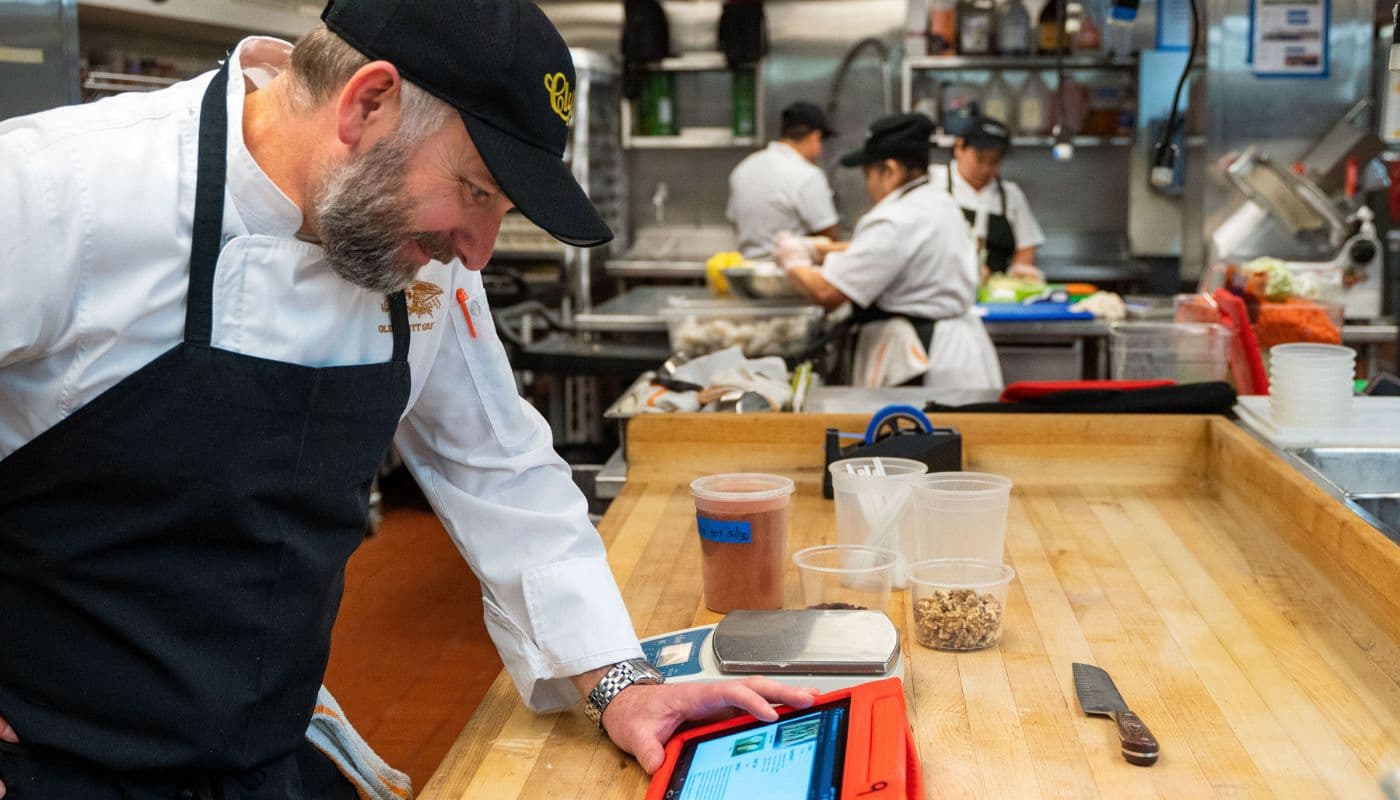Make restaurant inventory management easier with this 5-minute hack
Editorial Team
7 min read
Operators know that one of the biggest keys to profitability in a restaurant is lowering the average restaurant food cost. Thankfully, there are a number of ways to do that ranging from simplifying your menu to negotiating with suppliers. But, one of the best ways to tackle rising food costs is something you can do right now in your kitchen–and it only takes 5-10 minutes.
If you’re already taking weekly inventories, this hack probably won’t be super helpful. But, for operators who are short on time or resources and still want to make an impact in between monthly counts, here’s our hack: do a quick count of your top five highest cost key items before you make an order.
With this restaurant inventory management hack, you can sustainably manage waste, maximize profitability, and wrangle wiley food costs. Here’s how to do it in three easy steps.
Step 1: Take note of your top five highest cost products
If you’re tracking your COGS either with a restaurant management system (RMS) or on a spreadsheet, it should be relatively easy to determine your top five highest cost items. If you’re starting from scratch, we recommend looking first at your proteins.
Let’s say you’re a sushi restaurant. Most likely, your highest cost products will be salmon, tuna, and, maybe, crab or eel. Then, you can look at toppings. We all know the avocado toast craze has spiked the price of avocados over the years, so avocados, or other perishable toppings and additions, like fish roe, might be other key products to look into.
While rice is definitely going to top the most purchased list at a sushi joint, its pricing is relatively stable (and lower compared to proteins), so you’re probably safe to skip it for this hack. Sticking to perishables will also help save time with this because you’ll most likely find them all in the walk-in or fridges.
If you don’t already have a spreadsheet or RMS to tell you these items, one way to figure out what to track is to write down order quantities for your proteins and their prices for a week or two (as long as it’s a typical week), and see what tops the list. Use your most recent invoices for up-to-date product prices.
Step 2: Count the on-hand amounts for those five products when you do an order
This is the part that can take a few minutes to do each week. Each time you put in an order for those five products, use your notes app on your phone, a clipboard, or an old expo ticket (if you don’t have ticket printer PTSD) and take a quick on-hand count. If your products are perishable, then you probably only have one place to go. But, you might get a little chilly, so bundle up!
The benefit of doing this count before you put in an order is that you can eliminate the possibility of over- or under-ordering those items–and that can prevent your food cost from increasing since both mistakes add up quickly.
If you already know your weekly or daily pars for those items, it’s a simple pars minus on-hand amount equation to figure out order amounts.
While setting pars versus using gut instinct to order has its benefits–like distributing duties and not being the only person able to do an order every single time–not every restaurant will have set pars for specific items. Pars are typically dynamic and can change drastically depending on if a holiday is coming up or how many covers are on the books–even good or bad weather can make an impact!
Doing a quick count for your five key items right before you order still gives you a chance to dial in that gut instinct and make better ordering decisions. Bonus points if you track your orders and counts so you can get some of that “distribution of duties” we just talked about.
If you have an RMS, pars can be set automatically for you based on historical sales data from your POS.
Step 3: Get a restaurant management system to help you track even more
If manually updating a spreadsheet with your counts and orders sounds like a pain, then it might be worthwhile to look into bringing onboard an RMS that can do it for you. Not sure what to look for? Check out this blog for more info.
The right RMS can also help with inventory management for your restaurant by allowing you to set up custom count sheets pre-populated with products from your invoices in whatever order or sections you want. For anyone that’s had to run back and forth across a kitchen to take counts from an alphabetical count sheet, you’ll know that being able to customize your count sheets by shelf order is incredibly more efficient.
If your RMS does automated supplier invoice processing (and it should), it will also be able to show you your five key items to track for this hack along with their most recent prices. This gives you a fuller picture of what over- or under-ordering can cost your restaurant–without spending hours manually entering prices and order amounts into a spreadsheet each week. Best part is, the numbers are automatically updated for you from your invoices and POS data.
Sure, you could absolutely do it yourself with a few hours a week and a spreadsheet, but is that really the best way to spend your time?
The final way an RMS can help make this food inventory hack even easier is by choosing a solution that allows you to take mobile inventories from your phone or tablet directly into the platform.
Some people love taking inventory on a clipboard, and that’s cool–we’re not here to judge. You and your clipboard have been through a lot together, and that trauma bond is strong–we understand! But for a society with deep smartphone dependencies, being able to whip that bad boy out of your pocket and smash a quick count just makes sense.
The Tl;dr
While clearly beneficial, no one works in a restaurant so they can do inventories all day–we get it. So, whether it’s by hand or with an RSM, tracking your five key item counts with this quick hack can help make an impact on your margins where they mean the most.
Make restaurant inventory easier and more informative with MarginEdge Lite
MarginEdge Lite is a complete restaurant management system that greatly simplifies restaurant inventory management, so you can take inventory quicker and get more actionable information.
MarginEdge Lite integrates seamlessly with Clover and automatically processes all your invoices with line item detail at the snap of a picture. That means product prices are automatically updated and new products show up on inventory count sheets. You can kiss manual spreadsheets goodbye! You can also order from any vendor straight from the platform with automatic calculations based on pars and on-hand counts.
Take inventory straight from your phone and organize count sheets in the way that suits you best, so you can work more efficiently.
MarginEdge Lite also provides robust reporting so you can turn your inventory counts into action and optimize ordering, reduce waste, and maximize plate costs.
Make your next inventory less painful. Get a demo of MarginEdge Lite today
*Important Disclaimer: MarginEdge is the sole and exclusive provider of services described in this article. Clover does not make any representations or guarantees as to these products / services. Please see MarginEdge Terms & Conditions information.
Related Posts
Tips for how to write an employee handbook for a small business
How top food trucks pick the best spots
Popular Topics
Stay In Touch
Sign up and learn more about Clover.
Thank you for your subscription!
Recent Stories
- Jewelry store supplies and equipment needed for opening day
- How small businesses can use employee discounts to retain staff
- Tips and tricks for opening an outdoor pop-up restaurant
Please share your contact information
to access our premium content.
Thank you for sharing your contact information.
Download Now





